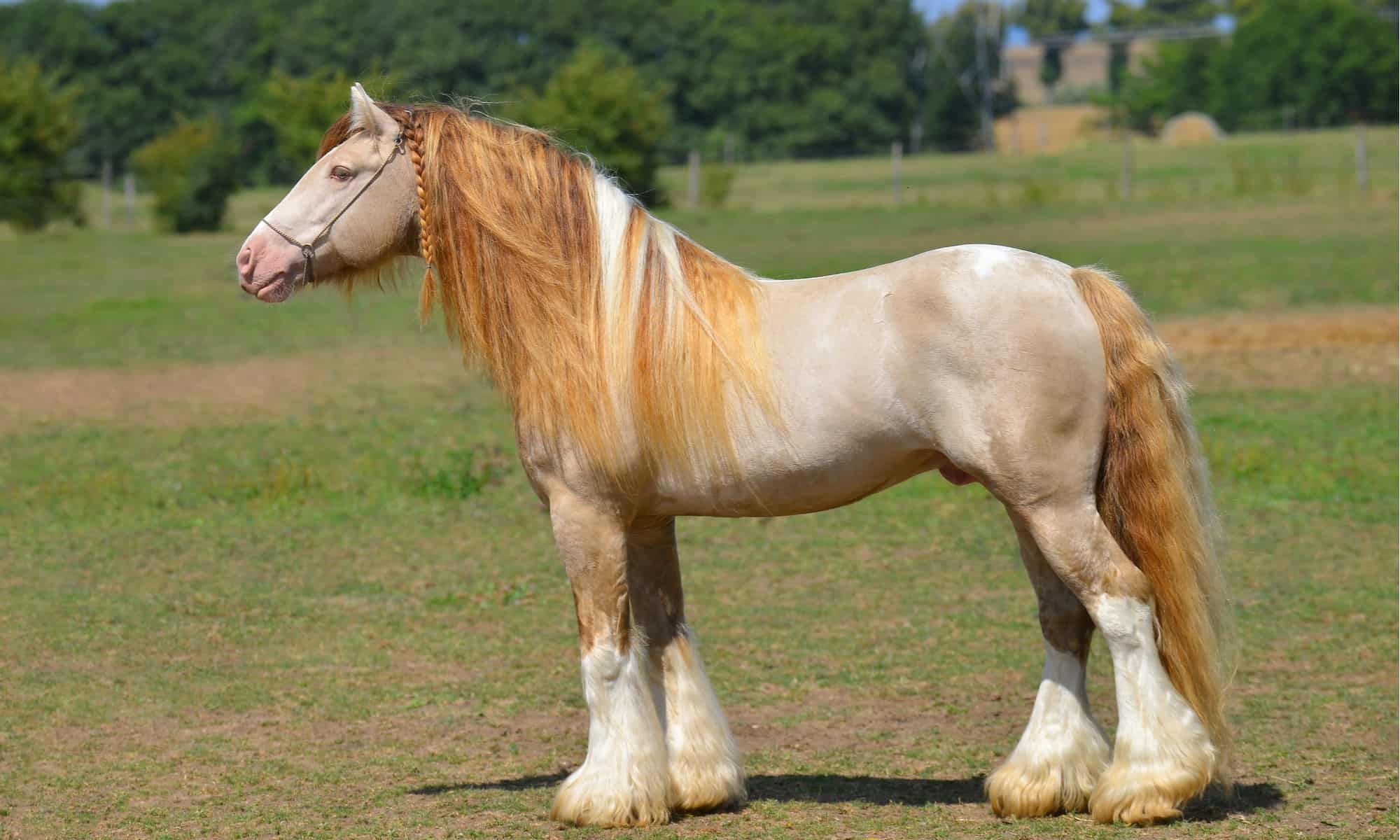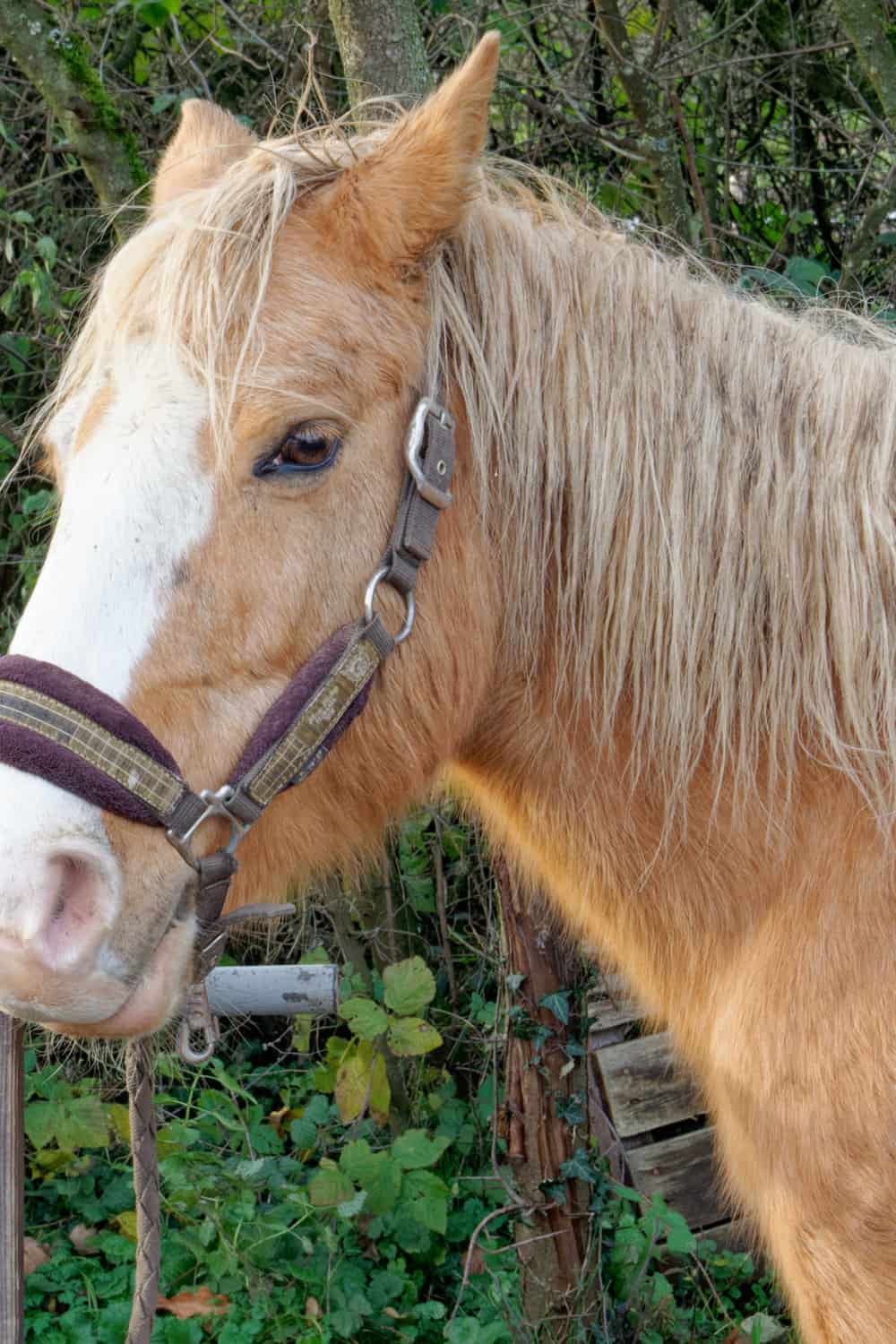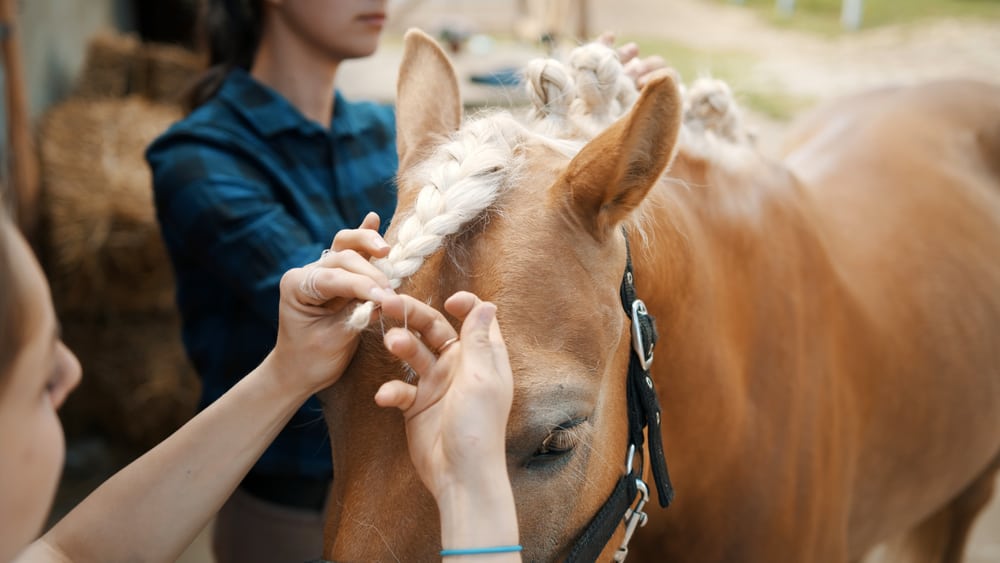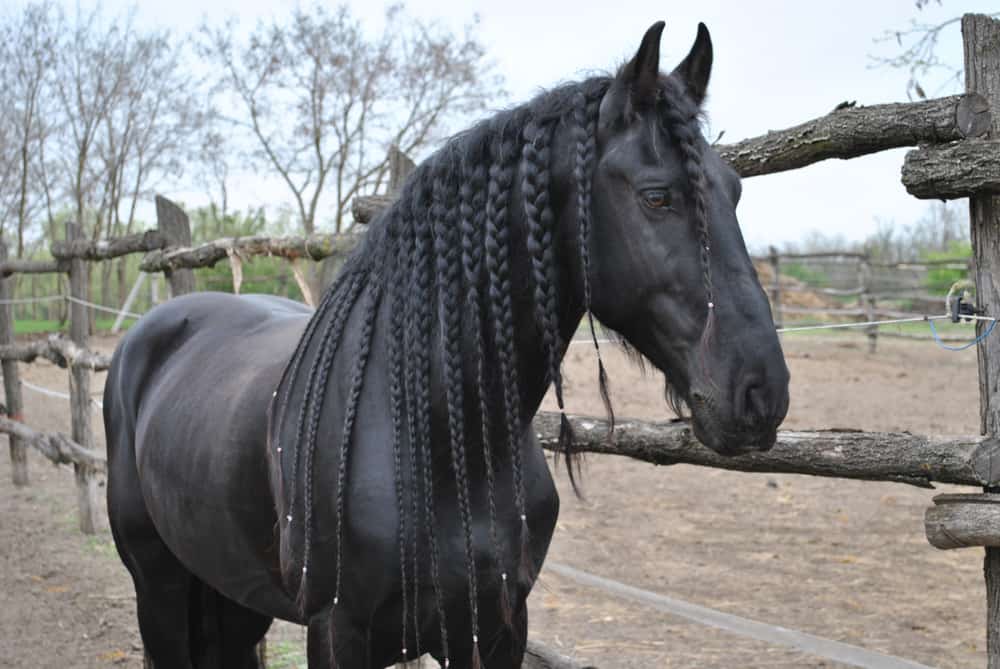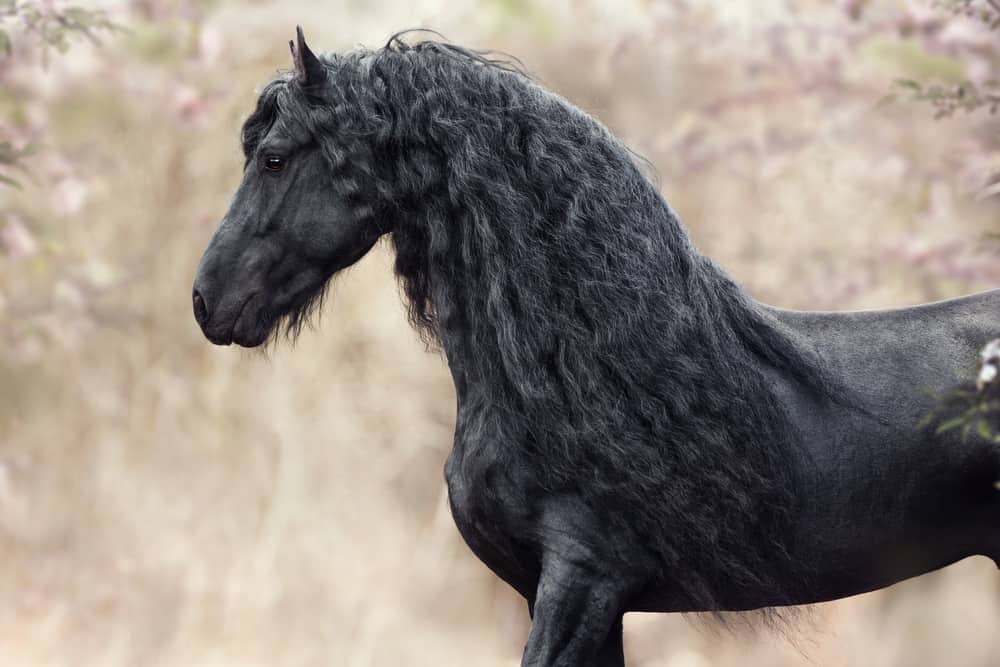A mane is one of a horse’s most distinctive features. But have you ever wondered what it’s actually for, and why it looks the way it does?
We’re going to take a look at 16 facts about horses’ manes that may surprise you! And by the time we’ve finished, you’ll know everything there is to know about them.
So if you’re ready, read on to find out more!
1. Stallions have a thicker mane than mares
In many species, the males have showier appearances than the females. But when it comes to a horse’s mane, males have thicker hair than females. That has nothing to do with attracting a mate. In fact, the reason is a whole lot less sweet!
Males in the wild will often fight each other for dominance. And when they do so, a common tactic is to bite the back of their rival’s neck. A thicker mane, therefore, provides protection. Think of it as hairy armor!
2. Manes are a good indicator of horse health
The condition of a horse’s mane can tell you a lot about his health. A thick, shiny mane is a sign he’s getting all the nutrients, vitamins and minerals he needs. A thin or patchy mane can indicate an animal that’s in poorer condition.
Regular grooming will help to keep your horse’s mane in good shape. And braiding it can prevent tangles and reduce the frequency with which you need to get out the brush.
3. Horses feel it if their mane is tugged
One thing to bear in mind, particularly when you’re grooming your horse, is they can feel it if their mane is pulled! The hair follicles in equine hair have nerve sensors, just as in human hair.
Pulling it can cause them discomfort and pain. And research has found that horses’ heart rates accelerate when their mane is pulled, indicating stress.
Careful grooming techniques can avoid this. You can find special combs that will enable you to thin your horse’s mane without backcombing it first. And proceeding slowly and gently can turn grooming into a pleasant experience for your horse.
4. Manes help to keep horses comfortable
By providing a protective layer of hair, manes help horses stay warm and dry. They direct rainwater away from the head and neck. And they help the animal to maintain its body temperature, insulating the head and the major vessels carrying blood to the brain.
They’re also valuable protection against biting insects. As well as providing a barrier, the long hairs can be used in a similar way to a fly swat. By shaking their heads, horses can flick their manes and bat away annoying bugs.
5. Manes can grow fast
The precise rate at which a horse’s mane grows will depend on a range of factors, including breed, climate and diet.
Generally speaking, larger, heavier horses like draft horses and cobs will have the fastest growing manes. The range for all breeds is anywhere between an inch and an inch and a half every month.
A balanced diet will support healthy mane growth too. That means the right quantities of amino and omega fatty acids, minerals and biotin, one of the B vitamins. Specialist products can be purchased that aim to deliver the correct balance of all these nutrients, encouraging vigorous growth.
One thing that doesn’t appear to affect the rate at which horses’ manes grow, however, is age. So unlike humans, horses needn’t worry about thinning manes as they get older!
And different parts of the mane grow at different rates. The hair at the top of the mane, nearest the part of the horse’s head known as the poll, grows fastest. That at the lowest part, near the withers, grows the slowest.
6. Manes stop growing at a certain length
You might wonder why wild horses don’t have manes down to the ground. That’s because each hair has a three-stage life cycle. And as with all living things, that life cycle takes a certain amount of time.
The first stage is called the anagen phase. This is when the hair is growing. The amount of time this part of the cycle lasts can vary between two and seven years. Different breeds will have different cycles, depending on their genetic composition.
But when the anagen phase is over, it’s over. The hair won’t grow any longer.
At this point, the hair enters the catagen phase. This is the rest period for the hair, and it happens while new hair is beginning to grow to replace it. It lasts for a few weeks.
After that, it’s the final stage, known as the telogen phase. This is where the hair falls out, as new hair takes its place.
Each hair in a horse’s mane will be at a different point in its life cycle. And this same process applies to every hair – whether equine or human!
7. Conditioning can promote a healthy mane
If you’ve ever used conditioner on your hair, you’ll know it can leave it smooth and sleek. The same goes for horses’ manes! There are lots of conditioning products out there that aim to detangle and add shine.
Grooming oils are particularly effective, because they both help remove knots and condition the mane.
But watch out for products specifically designed to add sheen. These often include silicone and sometimes alcohol. Over time, alcohol will make the mane brittle. And if any of the product gets onto the reins, the silicone can make them slippery. This can be very dangerous.
8. Some breeds have thicker manes than others
We’ve already seen that stallions have thicker manes than mares. But the thickness of a horse’s mane is also determined by its breed.
Ponies often have the thickest manes. Shorter animals have usually evolved to cope in areas with harsher climates, where a thick mane is important to keep them warm.
The Friesian, Gypsy Vanner and Icelandic horses are amongst the breeds with the longest manes and tails.
9. Manes can be styled in different ways
Horses’ manes can be groomed in many different styles – almost as many as human hair!
There are five main styles. These are natural, braided (also known as plaited), banded, pulled or thinned, and roached (also known as hogged).
The natural style is, as you’d expect, where the mane is left to grow naturally. It will need to be groomed regularly, and is usually carefully conditioned to help avoid tangling.
Braided or plaited styles keep the mane neat and cut down on the frequency of brushing required. This style of mane is often seen on horses competing in English riding disciplines.
Banded manes are divided into lots of small sections using bands. This style is most commonly seen in Western riding.
A pulled or thinned mane is one where small clumps of hairs are removed. The mane will be between 3 and 5 inches long, and lies flat against the horse’s neck.
A roached or hogged mane is one that’s been shaved off. You may see it in horses used for polo, preventing the mane getting into the horse’s eyes during matches.
10. Different breeds have their manes styled differently
We’ve already seen that different activities can be associated with different styles of mane. But different breeds of horses also traditionally have their manes styled in a particular way.
In the USA, Baroque breeds like the Friesian, Lusitano and Andalusian usually have natural manes. These are often kept as long as possible for a dramatic look. When horses are competing, however, their manes may be styled with French braids.
It’s a similar story for Arabian and part-Arabian breeds.
Connemaras, on the other hand, usually have pulled or braided manes. And Saddlebred, 5-gaited horses often have their forelocks and the first locks of their manes braided. The rest of the mane is left natural.
3-gaited Saddlebred horses may have a roached mane. And the breed standard for Fjord horses requires the mane to be roached for shows.
11. There are lots of different styles of braids
Even different styles of manes have their own sub-categories. When it comes to braids, for example, there’s a huge amount of variety.
The most common style in US and UK equestrianism is what’s known as “button braids”. These are round and relatively large, with anything between 9 and 15 braids in a mane.
It’s traditional for there to be an odd number of button braids. More braids will make a horse’s neck look longer, while fewer will have the opposite effect.
Another popular style is “hunter braids”. These are much smaller, and there’ll be between 20 and 40 braids along the mane. You may see them worn by dressage horses, but they’re most commonly used in hunt seat events.
A “knob braid” is similar to a hunter braid. Here, though, the top of the braid is pushed up to create a fuller section.
Other styles are the French and Continental braids, often used for dressage. And there’s the rarer “scalloped braid”, which appears as a series of loops.
12. Braiding was traditionally different for stallions and mares
When it comes to braiding, there are many different traditions around the world. These even extend to the number of braids in the mane. In the USA, it was once customary for male horses to have an odd number of braids, and female horses an even number.
Other traditions relate to where the braids sit. For eventers and show hunters, the mane is generally braided on the right-hand side. With dressage horses, on the other hand, the braids may sit on either side of the neck.
13. All styles of mane are often partly shaved
While it’s only a roached mane that is completely shaved, most styles can have a small shaved section. This sits just behind the ears, on the poll.
Shaving the mane here allows the bridle to sit better. It’s known as the “bridle path”, and this too is subject to various traditions and rules. Its length is dictated by both the breed of the horse and the discipline in which its performing.
14. Some manes get a perm!
Well, not quite. But some trainers like a mane to have a wavy appearance.
For that reason, they will loosely braid a horse’s mane the day before a competition. When they unbraid it, it will be left with an attractive wave. That will also give the mane a fuller look.
15. The word “mane” comes from Old English
It’s easy to confuse the word “mane” with “main”, meaning primary. But the root of the word for a horse’s neck hair is quite different.
It comes from the Proto-Indo-European root “mon”. This means either “neck” or, more specifically, the nape of the neck. This morphed into “manu” in Old English, and then into the word “mane” we use today.
16. The mane helps classify a horse’s color
Horses have many different color coats, and a distinctive vocabulary has developed to describe them. This system of classification includes the color of the horse’s mane and tail.
Both bay and chestnut horses, for example, have coats that are brown to reddish-brown. But a bay horse will have a black mane, tail and lower legs, known as “points”. With a chestnut horse, the mane and tail will be the same shade, or slightly lighter, than the body.
And a white or flaxen mane and tail is a distinctive feature of all palomino horses. The bodies of this color type are golden, tan or yellow.
The mane event!
We hope you’ve enjoyed our look at 16 facts about a horse’s mane. Hopefully, you’ve learned something new about these fascinating animals.
Manes perform an important function, protecting horses from the weather and other creatures, both large and small. But they’re also very beautiful. And the number of styles and products for manes reflects their importance to a horse’s appearance.
They can also give clues to a horse’s breed, as well as to what disciples he’s competing in. So next time you see a horse, take a good look at his mane and see what it tells you!
